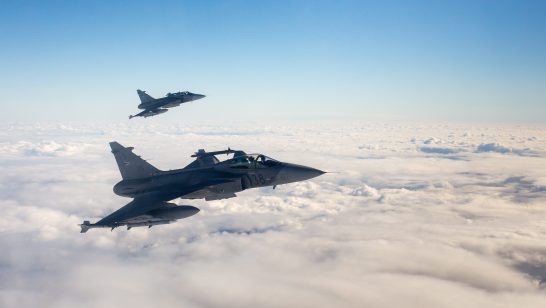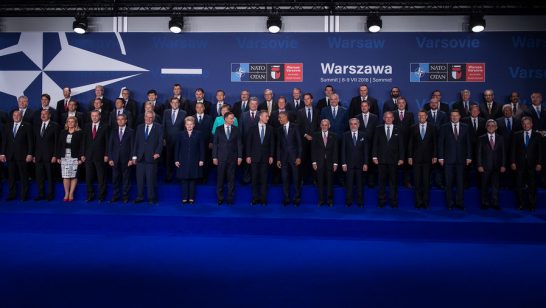
In 2015 Eurasian Economic Union (EEU) uniting Russia, Belarus, Kazakhstan and Armenia was launched, with Kyrgyzstan joining in March 2015. While a new entity in terms of international law, the EEU is the latest stage of Eurasian integration, building on the Customs Union (CU) launched in 2010 and the Single Economic Space (SES) initiated in 2012.
Given previous dysfunctional post-Soviet initiatives, the EU responded cautiously to the birth of the Customs Union in 2010, limiting itself to monitoring the regime and maintaining expert-level contacts. The EU was concerned with, first, the effect of the CU on the planned EU-Russia bilateral agreement and, second, Russia’s long awaited entry to the WTO. While the latter concern was placated once Russia’s WTO accession was completed and the CU undertook to comply with Russia’s WTO commitments, the former was not. The Kremlin demanded inter-bloc rather than bilateral relations with the EU. The Eurasian regime was presented as an exercise in functional economic integration, reflecting the logic of the times, rather than an empire-reviving project. Russia was intent on working at the level of supranational institutions rather than individual countries.
However, the EU has remained reluctant to do so for a number of reasons: first, two of CU’s founding states, Belarus and Kazakhstan were not WTO members and; second, because of the design flaws of the CU, such as the unclear division of competences within it; and, three, the limited extent to which the Eurasian integration contributed to trade liberalisation and effective WTO compliance. In addition, there is evidence to suggest that Eurasian structures are being used as a tool for Russia’s geopolitical vision in violation of the autonomous choice of countries, such as Ukraine.
In 2015, Russia asked the EU to develop formal relations with the EEU, including the establishment of a free trade area, thus radically overhauling its approach to the region. The EU’s sympathetic reaction to this suggestion was reflective of the need to placate Russia in order to secure peace in Ukraine rather than based on a comprehensive review of EU’s policy and the EEU’s achievements. Back in 2010 the EU’s caution may have been excessive. However, in light of the current situations, too many questions remain unanswered to allow for straightforward agreement to this proposal. These include some fundamental issues: Have the grounds for caution at the launch of the CU been dispelled with the EEU? Are there any reasons to assume that an agreement with the EEU will contribute to a sustainable resolution of the current crisis in EU-Russia relations and conflict in Eastern Ukraine in particular? How is the EU to engage with a bloc between partners who appear to have been cajoled by threats and bribes rather than a sense of common interest?
The launch of the EEU was an opportunity to tackle some of the ‘teething problems’ of Eurasian integration. Institutionally, the key achievement is the codification of the hitherto disparate legal basis of the CU and SES. In terms of the economic agenda, the parameters of integration have been clarified, though not vastly advanced. The new Treaty, for example, provides a time-table for including ‘sensitive goods’, such as pharmaceuticals or energy in the fold of integration. Generally, there is growing experience and progress across the integration agenda, e.g. in relation to adopting new technical standards.
At the same time, the record speed and manner of the project’s deepening and widening has exposed its fault-lines, undone some of previous achievements and created new risks. The construction of the EEU was driven by a schedule determined a priori at the highest-level, leaving no time for careful legal drafting, consolidating gains or even monitoring progress on the ground. There have been numerous changes in rules as well as bodies (e.g. the Court), which have created significant institutional uncertainty. Despite the emergence of what is a complex regulatory regime on the books, little attention is paid to domestic implementation. The need for modernisation of domestic institutions is not addressed either. On the contrary, the new Treaty provides explicitly that the Union is based on ‘respect for the specificity of the political structure of the member states’, thus allowing for the continuity of the prevailing authoritarian political and rent-seeking modes of governance.
The common regime remains critically dependent on political support from the highest levels. The commitment of presidents has involved concessions at successive stages of integration through bilateral bargaining between Russia and other member states. Belarus, in particular, has perfected the ability to extract specific benefits, thereby evidencing the high price Russia has been prepared to pay for the realisation of its geopolitical vision. This shows the extent to which the asymmetry between Russia and the remaining members underpins Eurasian integration. Despite the formal equality of votes in the Supreme Council of the Union, Russia uses various political, economic and security dependencies to limit diversions from its position by its small and vulnerable partners.
The contestation with the EU and, especially, the Ukraine crisis has exposed the dangers of this asymmetry. Russia pursued the expansion of the EEU to counteract the EU’s influence. Yet in doing so, Russia sorely tested the commitment of its allies. Their support for Russia’s annexation of Crimea has not been as definitive and unequivocal as Russia might have wanted. On the contrary, old sovereignty sensitivities and concerns for independence were ignited in loyal partners like Kazakhstan. Astana asserted the principles of independence and sovereign equality in the new Treaty and it also sped up the conclusion of a new agreement with the EU. Crucially, after refusing to join Russia’s sanctions, Kazakhstan and Belarus have found themselves embroiled in new trade wars with Russia. This compromised the first and fundamental achievement of the CU, namely the customs regime. It has unravelled through Russia’s unilateral departure from the common customs tariff, the reintroduction of customs checks and the marginalisation of multilateral institutions.
Thus, in using the Eurasian project as a foreign policy instrument, Russia has wasted an opportunity to strengthen the EEU, while jeopardising its allies’ political commitment. The reliance of this project on the presidents’ will and its weak implementation capacity cast serious doubts over the EEU’s viability as an effective regime for ‘deep’ economic integration.
It is therefore ironic that the EU is more willing to engage with the EEU than it was with the CU. In reality, the EEU has become even less ‘EU- like’ than before. Any agreement with the EEU is likely to be, in practice, an agreement with Russia as the latter has monopolised the external agenda of the Eurasian regime. Further, there are the costs and risks of dressing a geopolitical contest in technocratic trade terms, even if this entails not only the marginalisation of partners at the borders of the EEU but also inside it. Russia now seeks the institutionalisation of its hegemonic position in direct relations with the EU. It is unclear what source of optimism underpins the view that EU’s engagement with the EEU would solve the problems that direct EU-Russia relations could not. Given the EEU’s instrumental use by Russia, such recognition would carry a significant risk of empowering and legitimising Russia’s hegemonic drive in the post-Soviet space.
The opinions articulated above represent the views of the author(s), and do not necessarily reflect the position of the European Leadership Network or any of its members. The ELN’s aim is to encourage debates that will help develop Europe’s capacity to address the pressing foreign, defence, and security challenges of our time.




